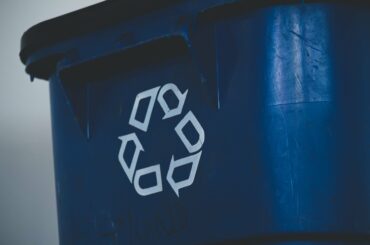In today’s world, recycling and responsible waste management have become crucial elements in our efforts to protect the environment and create a sustainable future. As responsible citizens, we need to understand the importance of recycling and adopt practices that minimize our ecological footprint. In this regard, one area that often goes unnoticed is the recycling of coolers. These portable containers, commonly used to keep food and beverages cool during outdoor activities, play a significant role in our lives. However, recycling coolers becomes essential for environmental sustainability when their usefulness ends.
Recycling coolers hold immense significance in our quest for a greener planet. The environmental impact of improperly disposing of coolers can be far-reaching. When coolers end up in landfills, they occupy valuable space and contribute to the growing waste crisis. Moreover, coolers are typically composed of different materials, such as plastic, foam insulation, and metal, which require extensive resources for their production. Recycling coolers can significantly reduce waste, conserve precious resources, and minimize our carbon footprint.
By recognizing the importance of recycling coolers, we take an active step towards preserving our environment. Through responsible disposal practices, we can ensure that these containers are given a new life, reducing the strain on our landfills and conserving valuable materials. Additionally, the energy savings achieved through recycling contributes to reducing greenhouse gas emissions and combating climate change.

In the following sections, we will explore the components of coolers and their recyclability, discuss responsible recycling practices, and highlight alternative disposal and upcycling options. By understanding the significance of recycling coolers and adopting sustainable practices, we can make a tangible impact on the environment and contribute to a cleaner and healthier planet for future generations.
Contents
The Environmental Impact of Coolers
Coolers are versatile containers that cool our food and beverages during various outdoor activities and events. These portable companions are often made of different materials, including plastic, foam insulation, and metal. However, when coolers are improperly disposed of, their environmental impact can be significant and far-reaching.
An overview of coolers and their composition reveals they contain multiple components, each with environmental implications. Plastic is commonly used in coolers, particularly for the outer shell and interior compartments. Improper disposal of plastic coolers can end up in landfills, which take up valuable space and contribute to the ever-growing waste crisis. Plastics can take hundreds of years to decompose, releasing harmful chemicals into the environment throughout their breakdown process.
Another component of coolers is foam insulation, typically made of expanded polystyrene (EPS) or extruded polystyrene (XPS). Foam insulation presents unique challenges for recycling due to its low density and limited market demand for recycled foam. When improperly disposed of, foam insulation can break down into small particles, creating microplastic pollution that harms ecosystems and marine life.
Furthermore, coolers often incorporate metal components such as hinges, handles, or locks. Metal extraction and production require significant energy and have associated environmental impacts, including greenhouse gas emissions. When coolers with metal parts are discarded in landfills, valuable metals are wasted, and the energy invested in their extraction and production is lost.
The potential environmental consequences of improper cooler disposal are considerable. They contribute to landfill overcrowding, exacerbate pollution, and deplete natural resources. However, the benefits of recycling coolers offer a promising solution.
By recycling coolers, we can significantly mitigate their environmental impact. Recycling reduces the amount of waste sent to landfills, alleviating the strain on these already overburdened facilities. Moreover, recycling coolers conserves resources by reclaiming materials such as plastic and metal, reducing the need for extracting and manufacturing new materials. This, in turn, helps conserve energy and reduce greenhouse gas emissions associated with producing virgin materials.
Components of a Cooler and Their Recyclability
A. Plastic components: Coolers often contain various plastic parts, and understanding their recyclability is essential for responsible disposal.
1. Types of plastic commonly found in coolers: Coolers may contain plastics such as polyethylene (PE), polypropylene (PP), or polystyrene (PS). These plastics are widely used due to their durability and insulation properties.
2. Recycling symbols and their meanings: Look for recycling symbols on the plastic components of the cooler. These symbols indicate the type of plastic and help determine if it can be recycled. Common symbols include PETE (1), HDPE (2), and PP (5).
3. Local recycling guidelines for plastic components: Contact your local recycling facility or check their website for specific guidelines on plastic recycling. They will provide information on which types of plastic they accept and how to prepare them for recycling, such as cleaning and separating them from other materials.
B. Foam insulation: Foam insulation is commonly used in coolers for thermal resistance. However, recycling foam can be challenging due to its low density and limited market demand.
1. Types of foam insulation used in coolers: Expanded polystyrene (EPS) and extruded polystyrene (XPS) are the most common types of foam insulation used in coolers.
2. Local recycling facilities and special programs for foam recycling: Check with your local recycling center to see if they accept foam materials. Some facilities have specialized equipment for foam recycling or may hold special drop-off events for foam disposal. Alternatively, you can inquire about local recycling programs or organizations that specifically handle foam recycling.
C. Metal parts: Coolers often incorporate metal components that can be recycled, contributing to resource conservation and reducing the need for new metal extraction.
1. Common metal components in coolers: Metal hinges, handles, locks, and other fasteners are commonly found in coolers. These components are typically made of metals such as aluminum or steel.
2. Recycling options for metal parts: Separate them from the cooler and place them in your regular recycling bin. Alternatively, you can take them to a metal recycling facility to be properly processed and reused in manufacturing.
Understanding the recyclability of the different components of a cooler is essential for responsible disposal. By following local recycling guidelines, utilizing specialized foam recycling programs, and recycling metal parts, we can ensure that coolers are properly recycled, reducing waste, conserving resources, and promoting environmental sustainability.
Responsible Cooler Recycling Practices
A. Preparation before recycling: Before recycling your cooler, it’s important to take a few steps to ensure the process goes smoothly and efficiently.
1. Cleaning the cooler thoroughly: Empty the cooler’s contents and clean it thoroughly, removing any food residue, dirt, or debris. Use mild detergent and water to wash the interior and exterior surfaces. Proper cleaning ensures that the recycling process is hygienic and prevents contamination.

2. Removing non-recyclable materials: Check the cooler for any non-recyclable materials attached to it, such as stickers, labels, or other accessories. Remove these items, as they can hinder the recycling process. Dispose of non-recyclable materials properly according to local waste management guidelines.
B. Locating recycling facilities and programs: Finding the right recycling facilities and exploring available programs can facilitate the responsible recycling of your cooler.
1. Contact local recycling centers: Contact your local recycling centers or waste management authorities to inquire about their policies and guidelines for recycling coolers. They can provide information on whether they accept coolers and, if so, the specific requirements for recycling them. They may also inform you about local drop-off points or cooler collection events.
2. Researching take-back programs or initiatives by manufacturers: Some cooler manufacturers have implemented take-back programs or initiatives to facilitate the recycling of their products. Research the manufacturer’s website or contact customer service to inquire about available programs. They may provide instructions on returning the cooler to them for recycling or direct you to authorized recycling partners.
By properly preparing your cooler for recycling and actively seeking out appropriate recycling facilities and programs, you can ensure that your cooler is recycled in an environmentally responsible manner. Following these practices contributes to waste reduction, resource conservation, and promoting a circular economy.
Alternative Disposal and Upcycling Options
A. Repurposing coolers for other uses: Instead of disposing of your cooler, consider repurposing it for various creative and practical applications, giving it a new life and reducing waste.
1. DIY projects and creative ideas for repurposing coolers: Explore do-it-yourself (DIY) projects that can transform your cooler into something useful. Examples include turning it into a garden planter, outdoor seating, or a storage container for non-food items. Online resources and tutorials offer many ideas to spark your creativity and repurpose your cooler uniquely.
2. Contributing to waste reduction through upcycling: You actively participate in waste reduction efforts by repurposing your cooler. Upcycling saves the cooler from ending up in a landfill and reduces the need for new products and resources. It showcases the potential for creativity and sustainability in everyday objects.
B. Donating coolers in usable condition: If your cooler is still in good working condition and you no longer use it, consider donating it to organizations or individuals who can benefit from it.
1. Identifying suitable donation recipients: Contact local shelters, schools, community centers, or charitable organizations to inquire about their need for coolers. These establishments often rely on donations to support their operations or provide assistance during events. Consider matching the cooler’s features and size with the specific requirements of potential recipients.
2. Ensuring coolers are in good working condition for donation: Before donating, ensure your cooler is clean, functional, and free of any damages or defects. Thoroughly sanitize the cooler to ensure it is ready for immediate use. Providing a well-maintained cooler increases its usefulness and enhances the impact of your donation.
By repurposing coolers through DIY projects or donating them to those in need, we can extend their lifespan, reduce waste, and contribute to sustainable practices. Embracing alternative disposal options promotes a circular economy, where resources are utilized efficiently and items are given a second life, aligning with our collective responsibility to protect the environment and foster a more sustainable future.
Conclusion
Recycling coolers is not just about proper waste management; it is a crucial step toward environmental sustainability. By recapitulating the importance of recycling coolers, encouraging responsible disposal, and recognizing the role of individuals in creating a sustainable future, we can foster a greener and cleaner planet.
Recycling coolers hold immense significance in minimizing the environmental impact of improper disposal. Coolers, composed of materials like plastic, foam insulation, and metal, can contribute to landfill overcrowding, pollution, and resource depletion if not responsibly recycled. Recycling coolers reduces waste, conserves resources, and helps mitigate the carbon footprint associated with their production and disposal.

Responsible disposal practices are essential in ensuring that coolers are properly recycled. Cleaning the cooler thoroughly and removing non-recyclable materials are necessary to prepare it for recycling. Locating recycling facilities and programs, whether through local recycling centers or manufacturer take-back initiatives, provides options for recycling coolers in accordance with local guidelines and regulations.
In addition to recycling, exploring alternative disposal options such as repurposing coolers through DIY projects or donating them to those in need further promotes waste reduction and resource conservation. By repurposing coolers creatively, we can extend their lifespan and minimize their environmental impact. Donating coolers in usable condition allows others to benefit from their functionality, fostering a sense of community and social responsibility.





